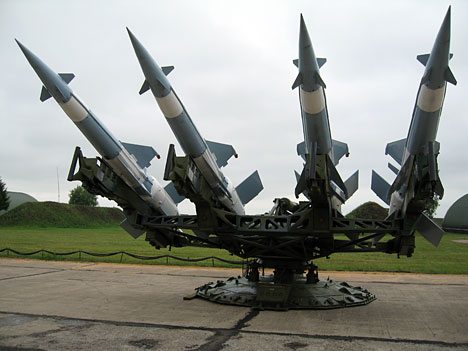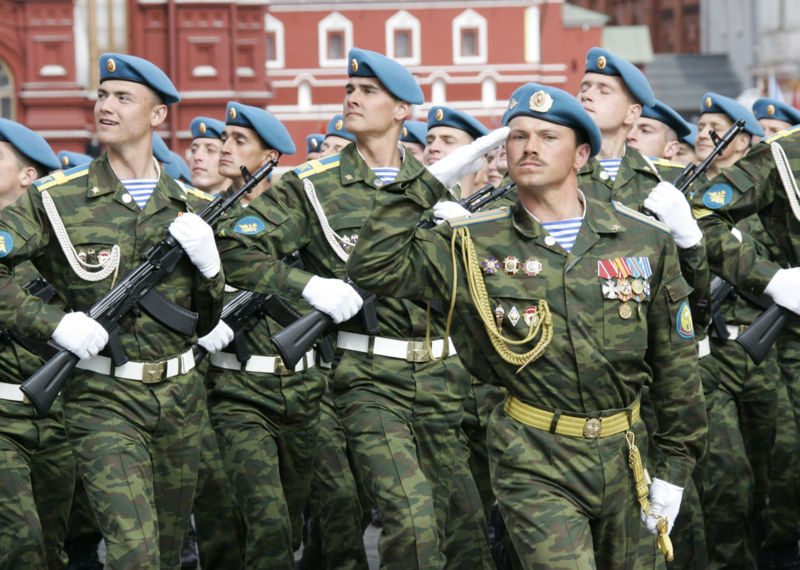Among the most important tasks faced by modern troops is protecting their air defense systems. The Russian defense ministry has struck a number of deals with the weapons manufacturing giant Almaz-Antei, triggering a major revamp of production facilities. Still, manufacturing rates have already begun to surge.
Under the 2012 state arms program, Russian troops are to be supplied with 28 Pantsir-S1 surface-to-air missile and anti-aircraft artillery weapon systems. These mobile close combat systems are designed to protect long-range air defense and anti-missile complexes from cruise missiles, self-propelled bombs and other high-precision attacks.
The Russian air defense is currently equipped with just 10 systems of this type, supplied in 2010. This two-year military experience was taken into account by system’s designers who updated the Pantsir-S1.
Its deliveries were later resumed and even surged. Pantsyr battalions are to be deployed with anti-aircraft missile brigades to step up their combat survivability: it often happens that air defense systems, especially long-range ones, are the first to be targeted by the enemy in an attempt to secure a “clear sky.”
The Pantsir is not the only system capable of tackling such tasks. Russian arms makers are currently creating another short-range complex, the Morfei, with new missiles and a strike range of up to 10 km.
One of its special features is a high number of compact missiles on the launcher (up to 36), which increases the its ability to withstand massive air raids and vast volleys of cruise missiles, making the system echeloned and allowing for forceful strikes, penetrating deep into the aircraft formation. The closer the enemy is to the protected target, the higher is the fire density.
The entire system works as follows. Fighter jets act as the first echelon, covering the area beyond the range of anti-missile systems (from 300-400km to 1,000-1,500km). At the distance of 50-100km to 250-400 km, targets are engaged by S-300PM, S-400 and S-300V4 air defense systems, capable of shooting down combat jets, unmanned aerial vehicles and airborne command posts deep in the enemy’s formations.
Medium-range surface-to-air systems, such as the Vityaz (with a range of up to 120km) and the Buk (with a range of up to 30-70km), cover the further stretch of the way to the vital military facilities. Short-range and close combat systems then comb the sky and shoot down everything that made it through the previous defense lines.
Under the state arms program, the Almaz-Antei weapons company has embarked on a mission to modernize its production facilities. It remains to be seen whether it will be hasty enough to keep apace with the manufacturing schedule, but in this case it’s “better late than never.” After some 20 years of stalled modernization one shouldn’t complain about additional two to five years.
Among the factories to undergo this profound revamp is the Moscow anti-aircraft building plant, Avangard. Almaz-Antei has invested large sums of money into this factory, increasing its manufacturing capacity tenfold over the past several years and upping its annual outputs to hundreds of missiles.
The factory is now working to establish ties with Russian universities. For instance, it founded a joint R and D center, Avangard, with the Moscow Bauman University to engage students in its work and add “fresh blood” to its staff.
The average age of Avangard employees has thus been decreased from 56 to 40 years. However, the industry still falls short of 35-45 year old experts who fled the country in the 1990s – early 2000s, creating a deep skills gap between generations.
The implementation of the 2012 state arms program is still staggering. The media have multiple times reported that the development of the S-500 and the production of the S-400 systems are lagging behind the initial schedule. This gap could be bridged by using production capacities to the full. The good thing is, they are already doing that.











